Paycheck Protection Plan (“PPP”) Loans – Disbursement and Use of Loan Funds – Best Practice Guidelines
PPP Loans – Best Practice Guidelines: If you’ve been approved for the Paycheck Protection Program loan, you may have been wondering what are the best practices for receiving and using the funds and documenting the expenses the funds are used on. We have compiled some guidelines to help you as much as possible and we are ready to help if you need our assistance.
Deposit of Funds: It is recommended that the PPP loan funds should be deposited and held until used and disbursed, in a separate new account, and not commingled with operating accounts and/or payroll accounts. We strongly recommend that any such account be opened and maintained with the bank that is providing the funds since such a bank will have to approve the forgiveness at the end of the eight (8) week period.
Account Records: Internal ledgers should be maintained to track all disbursements from your account. We also recommend that you make withdrawals from your separate account on a weekly basis, so that you can provide further certification to the lender that the funds were used for authorized expenditures.
Timeframe: As of the date the PPP loan is funded, you have eight (8) weeks to spend the money on authorized expenditures.
Documentation: Employers need to document every dollar spent with the proceeds of the PPP loan since employers will need to provide precise documentation to the original lender at the end of the eight (8) week period. Please note that the government considers funds spent on anything other than the approved expenses to be fraudulent. Also, the use of funds for non-approved purposes could cause the loan to become a recourse loan.
Monitoring Spending in the Next Eight Weeks: Pursuant to the most recent US Treasury SBA Interim Final rules (issued April 2, 2020), at least 75% of the PPP loan proceeds need to be used for payroll and no more than 25% of the PPP loan is allowed on the specific operational (non-payroll) expenses, such as rents, utilities and mortgage interest payments.
Proceeds of the PPP that qualify for loan forgiveness are to be used for:
- This is essentially a payroll supplement program. Payroll costs include salaries, wages, commissions, or similar compensation;
- Managerial employees are also considered employees up to an annual income cap of $100,000.00.
- Based on the eight (8) week use period, this means that, over the applicable period, compensation paid from the loan funds is capped at $15,385.00 per employee.
- Payment and continuation costs of group health care benefits, during periods of PTO for sick, medical, and FMLA, retirement benefits and insurance premiums, and payments of state and local taxes assessed on employee compensation, but not on the employee’s portion;
- Rent and utilities (including electricity, gas, water, transportation, telephone and internet access) obligations after February 15, 2020;
- Mortgage interest payments (but not for prepayments or principal payments);
- Interest payments on other debt existing or incurred before February 15, 2020.
Allocation Among All Employees: All employees should be treated equally; i.e., no priorities.
Documentation of Expenses: Confirm with the lender what documentation it will require after the eight (8) weeks to approve and certify the loan forgiveness.
All eligible expenses should be tagged to clearly document and state they are related to the PPP. For easy organization, we recommend separate ledgers or electronic folders sorted by expense category.
Maintaining Employee Count and Compensation: For full loan forgiveness eligibility, Employers must maintain employee headcount AND compensation levels.
- If employee count or compensation level was reduced between February 15, 2020, and April 25, 2020, but is re-established by June 30, there will be no reduction in the loan forgiveness amount.
- To determine employee count — compare the average number of Full-Time Employees (FTEs) per month between February 15, 2019, and June 30, 2019.
- Full-time employees are defined as any employee, in a given month, who averages at least 30 hours of service per week. In addition to any part-time employee, this is calculated by taking all hours worked by part-time employees in a month and dividing by 120.
- To determine compensation level — each employee’s wages compared with the most recent full quarter cannot have dropped more than 25%.
- Your workforce is not specific to an individual, so as long as you maintain overall employee count and total payroll costs, you can continue to make solid business decisions with respect to hiring/firing as usual.
What happens if we do not use all of the funds on qualified costs? Employers may be required to pay back all or a portion of the loan, including interest. Interest, at 1% per annum, will accrue on the PPP loan from Day One, even though the employer will not have to make any payments for six months following the date of disbursement on any non-forgiven amount.
Interest will only be forgiven on the amount related to the principal forgiven.
End of the Loan Use Period: After the eight (8) week period, you will need to submit a request to the lender who is servicing the loan. The request will include all documents supporting the spending of the funds, the number of full-time employees, and compensation levels. The lender will have 60 days to decide on forgiveness. We highly recommend contacting the bank early on to determine the appropriate loan forgiveness documents.
Loan Forgiveness: The full PPP loan balance may be forgiven, if used during the eight (8) week period for the authorized expenses. However, forgiveness is not automatic.
The employer will need to file an application with the original lender after the eight (8) week period, and such a lender will be required to make the forgiveness determination within sixty (60) days. Also, loans that are forgiven under the PPP are not subject to federal taxation as “forgiveness of indebtedness income”.
The IRS has recently announced that the forgiven sums are not tax-deductible. For more information on PPP Loans – Best Practice Guidelines, feel free to contact us anytime




